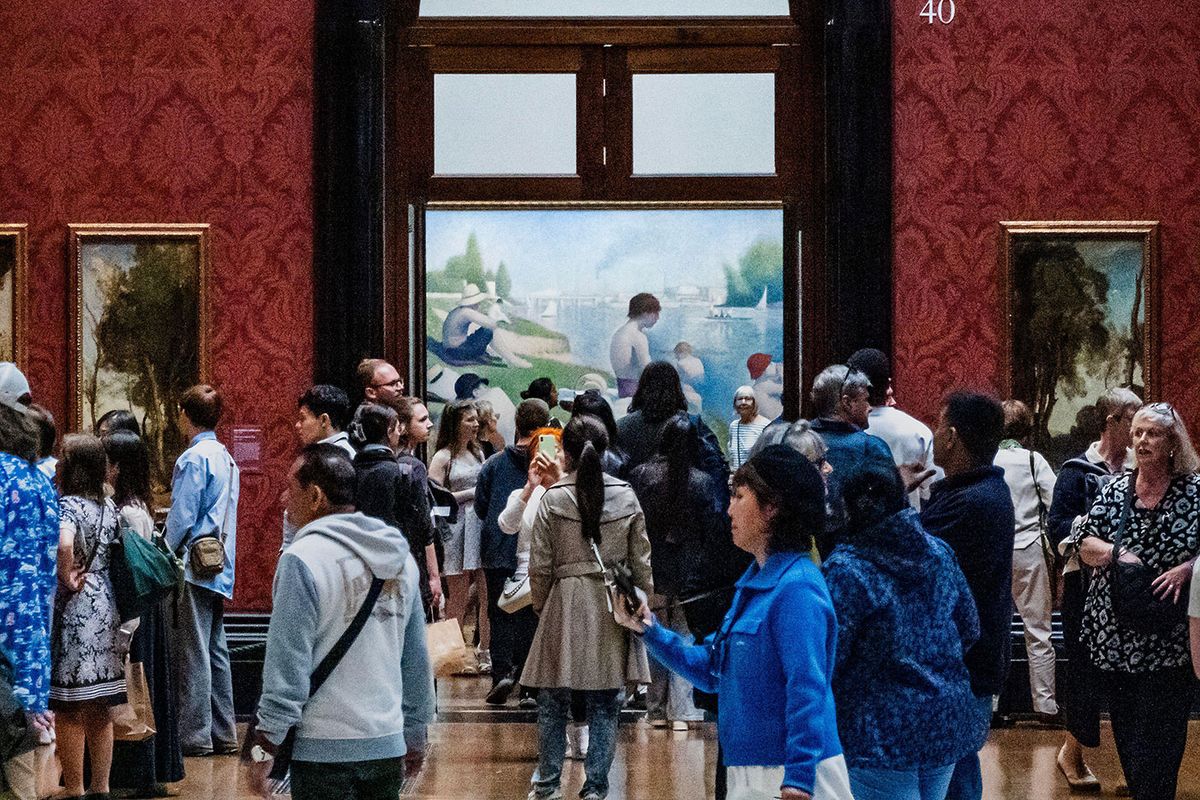The collection of the National Gallery in London was founded with the acquisition of a small but impressive group of 38 paintings from the estate of the insurance broker John Julius Angerstein, whose Pall Mall townhouse was the gallery’s first home. After an evolution populated with colourful stories—including the antics of the "Canal Duke" Francis Egerton’s syndicate of aristocratic collectors nabbing the Duke of Orléans’ treasured paintings for a bargain after the French Revolution—the gallery is now home to more than 2,300 paintings. These works span the history of Western European painting “from Giotto to Cézanne”, although they also encompass the early modernism of Pablo Picasso’s Fruit Dish, Bottle and Violin, 1914.
The gallery has recently completed a comprehensive rehang of its collection, at the Trafalgar Square site it has occupied since 1838, coinciding with the reopening of the Sainsbury Wing after a two-year renovation. London is rare among capital cities in being able to offer visitors to its national gallery the extraordinary opportunity of communing, free of charge, with masterpieces by Raphael, Caravaggio, Titian and Vermeer: a reminder of just how special the collection is.
Here are ten essential works to see on a visit to this historic institution.
Jan van Eyck, The Arnolfini Portrait (1434)
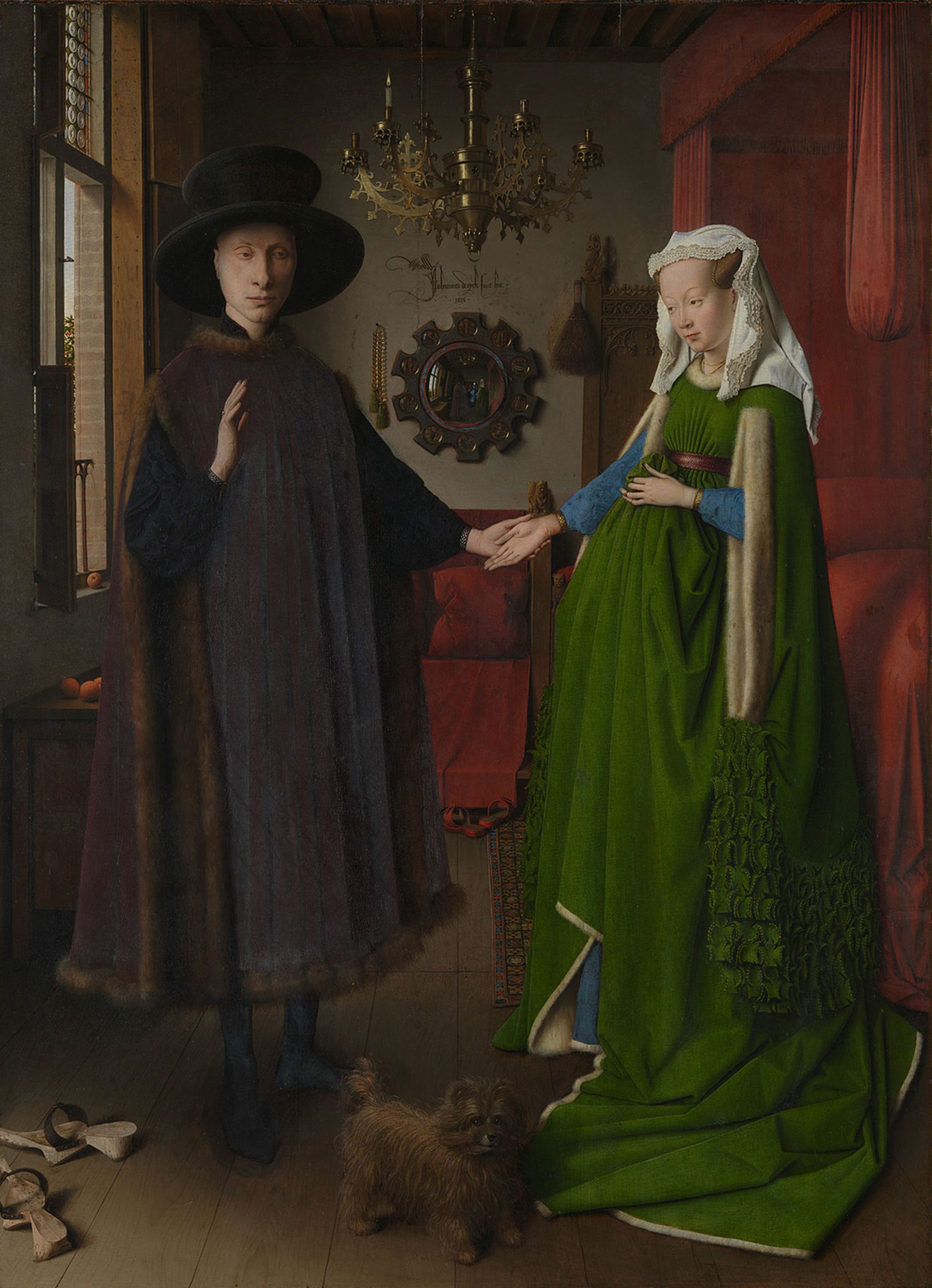
Jan van Eyck, The Arnolfini Portrait (1434) Photograph: The National Gallery, London
While Jan van Eyck was not the first to use oil paints, as was claimed by Giorgio Vasari, he remains one of the best to have done so. This double portrait depicts a young and prosperous bourgeois couple at the start of their marriage. The figures want to be seen as devout and God-fearing, as we can tell from their pious expressions and the fact that the mirror frame is decorated with scenes of the Passion of the Christ, while van Eyck masterfully manages the light from the back window to evoke coherent space but not linear perspective. For David Hockney, the implausibly lifelike chandelier was one of the smoking guns which “proved” his thesis that early Flemish artists like van Eyck had used concave mirrors and other optical aids to render their extraordinary realism.
Leonardo da Vinci, The Burlington House Cartoon (around 1506-08)
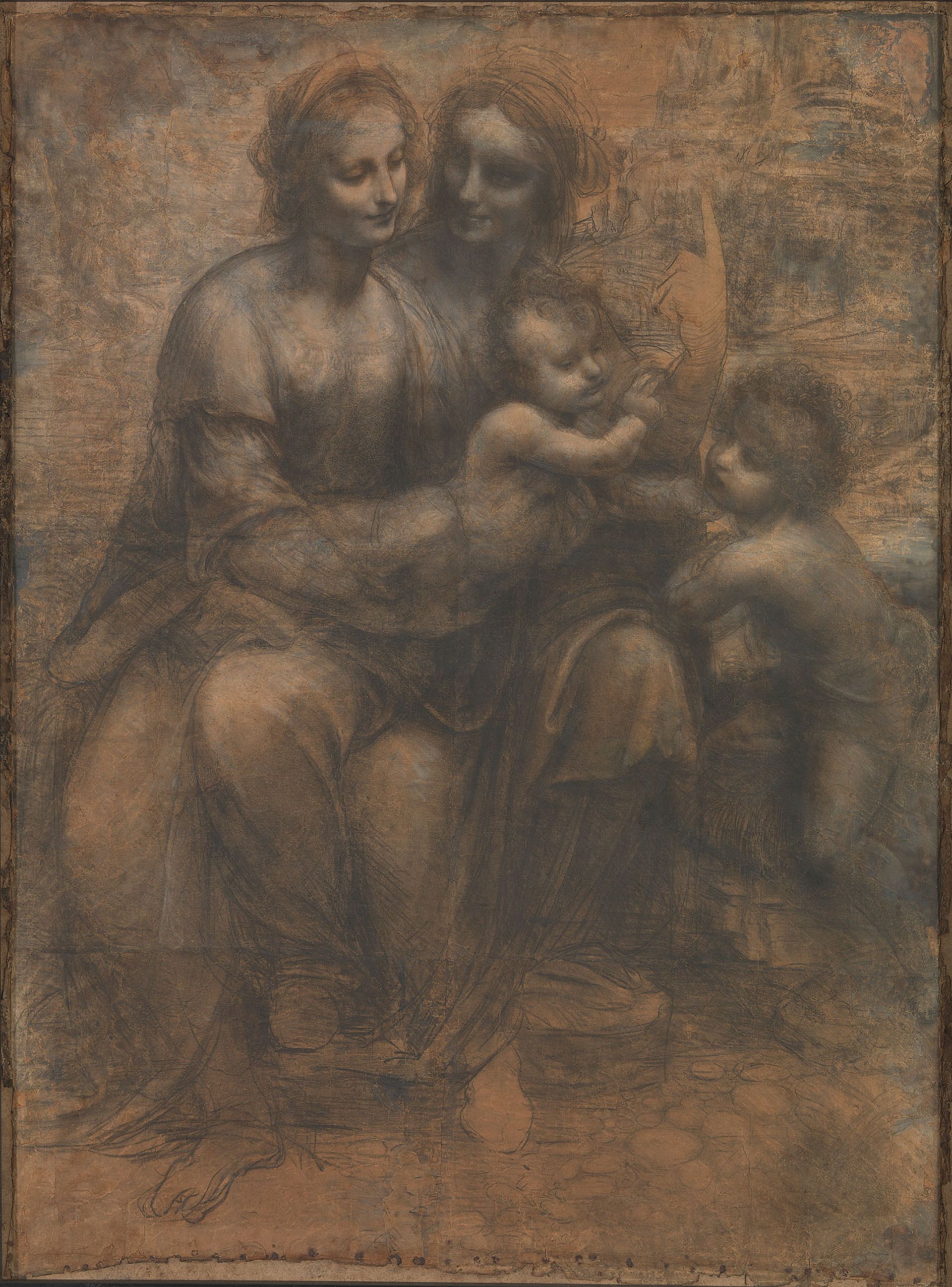
Leonardo da Vinci, The Burlington House Cartoon (around 1506-08) Photograph: The National Gallery, London
Perhaps the most fragile and cherished work in the National Gallery, Leonardo’s Cartoon (meaning a full-size preliminary design for a painting) is now displayed in a small room behind his masterpiece The Virgin of the Rocks, the darker and more surreal cousin to the work held in the Louvre. The Cartoon is the only surviving large-scale drawing by Leonardo and depicts a tender moment for the Holy Family. The Virgin Mary is seated on her mother Saint Anne’s lap, drawing attention to the intimate relation between parent and child as a counterpoint to the familiar image of Christ cradled by his mother. Here, he plays with his cousin, John the Baptist, by tickling his chin. It is a touching portrait of familial bliss—the Virgin’s dazed but joyful expression is universal—but the outlined finger of Saint Anne, gesturing to heaven, returns us to the divine plan for the infants.
Paolo Veronese, The Adoration of the Kings (1573)
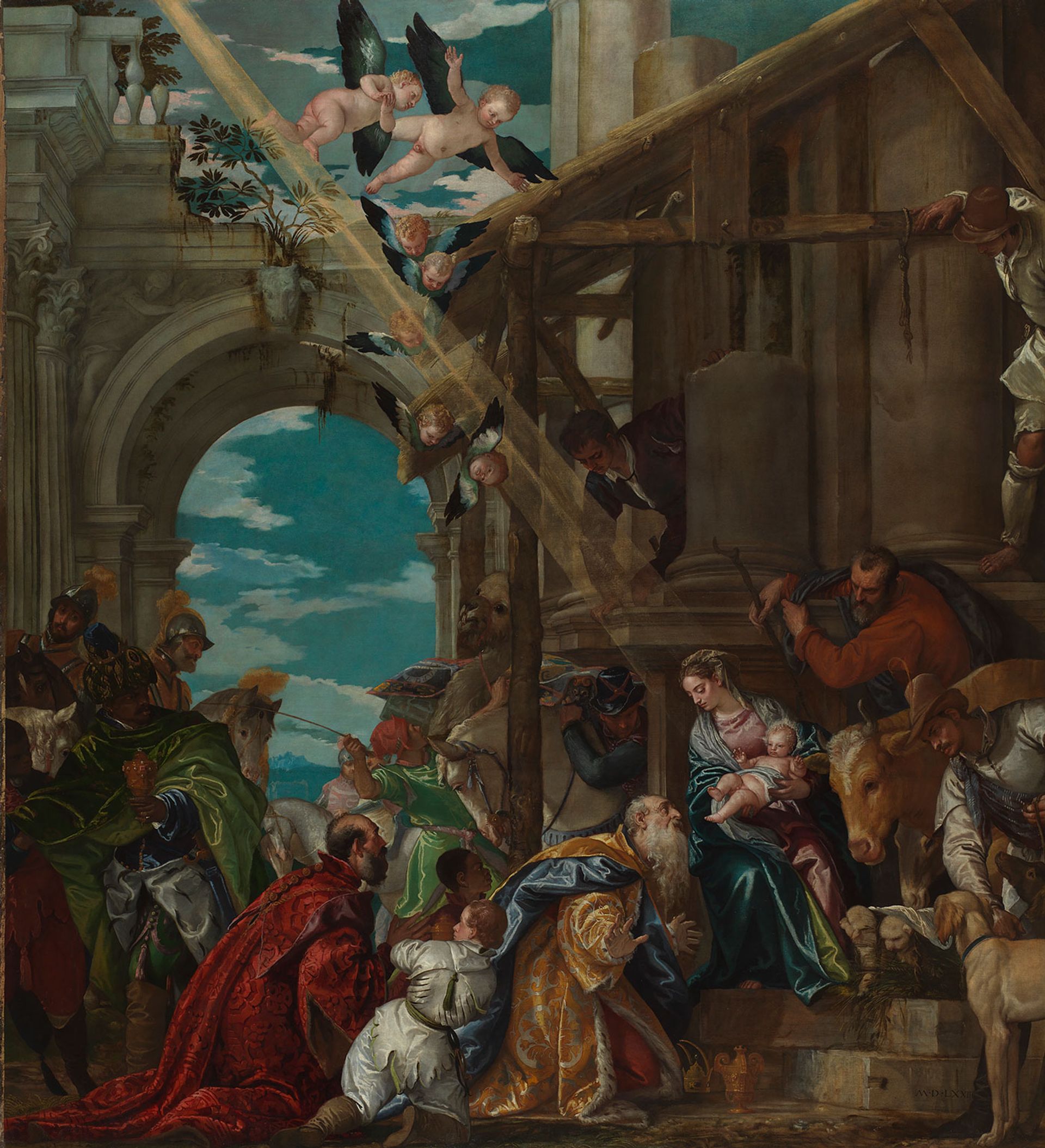
Paolo Veronese, The Adoration of the Kings (1573) Photograph: The National Gallery, London
The 16th century produced some knockout works on the story of the Adoration of the Kings, when the three wise men visited the infant Jesus, bringing gifts of gold, frankincense, and myrrh. Among them is Pieter Bruegel the Elder’s 1564 version in which the dishevelled cast are found merely ogling the trappings of wealth and so slighting the Son of God. In contrast, Veronese’s exquisite painting is more magisterial: the dominant diagonal, like a theatrical spotlight from heaven with a chorus of angels, cuts across the scene and is counted by the upward diagonal of the adoring travellers, with Madonna and child placed where these lines intersect. Commissioned for the church of San Silvestro in Venice and its nave, beside the altar of the confraternity dedicated to Saint Joseph, the painting demonstrates Veronese’s remarkable gift for colour.
Artemisia Gentileschi, Self Portrait as Saint Catherine of Alexandria (around 1615-17)
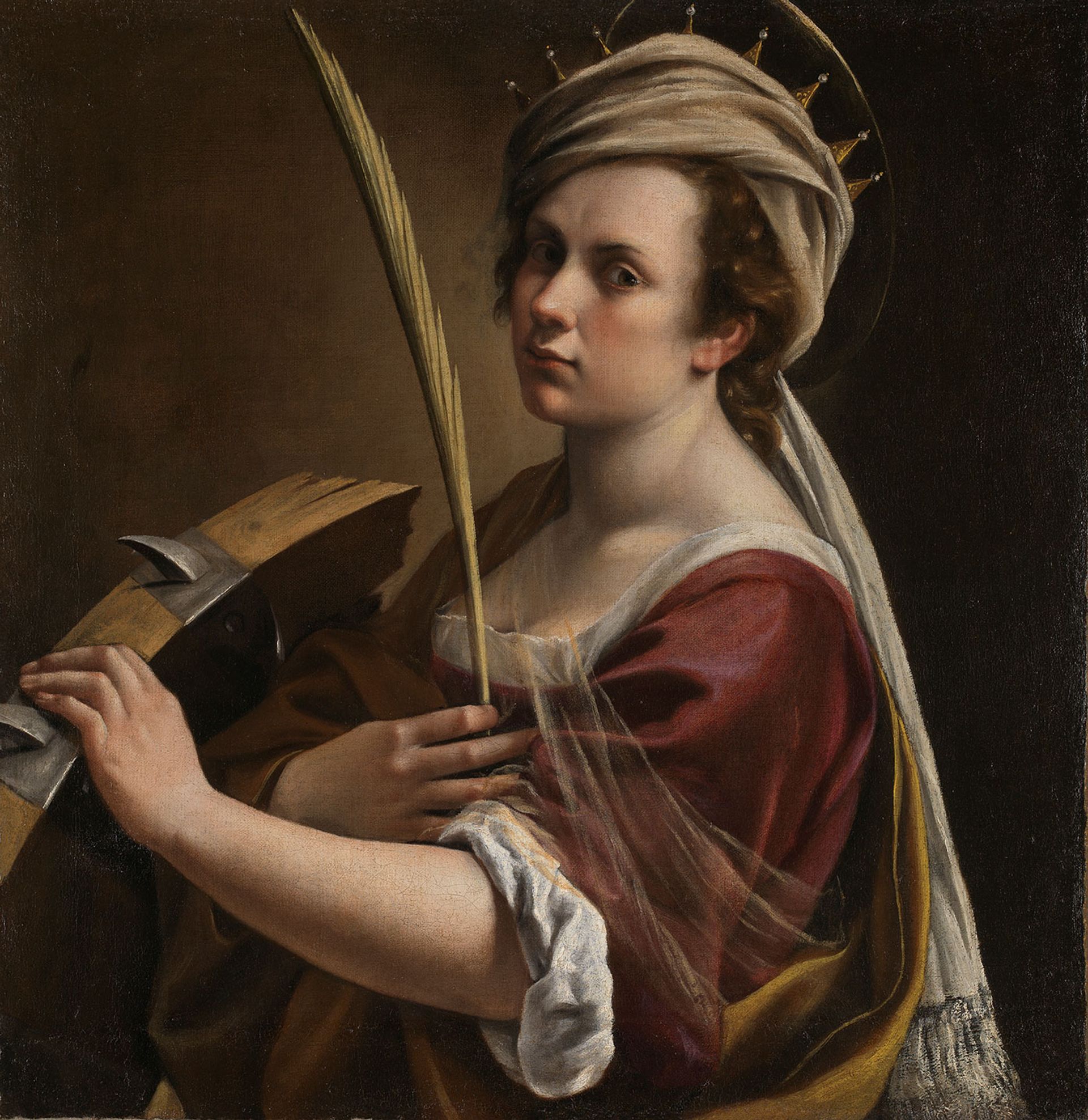
Artemisia Gentileschi, Self Portrait as Saint Catherine of Alexandria (around 1615-17) Photograph: The National Gallery, London
It is believed that Artemisia Gentileschi, the most significant woman painter of the Baroque, started this painting as a self-portrait before reimagining herself with the calling card of Saint Catherine: the broken spiked wheel on which the saint was condemned to be tortured, only to miraculously shatter it with her touch. The martyr’s palm (a victorious symbol of spirit over the flesh), halo, and exquisite pearl crown were also added later. It is possible that Artemisia identified with the strength and virtue of Catherine in the face of male aggression: Catherine was ultimately condemned to death by the Roman emperor Maxentius, while Artemisia, who was raped at 17 by her painting tutor, endured a scandalous seven-month trial in which she was tortured by sibille (the tightening of ropes around the fingers) to ‘test’ whether she was telling the truth.
Rembrandt van Rijn, Self-Portrait at the Age of 63 (1669)
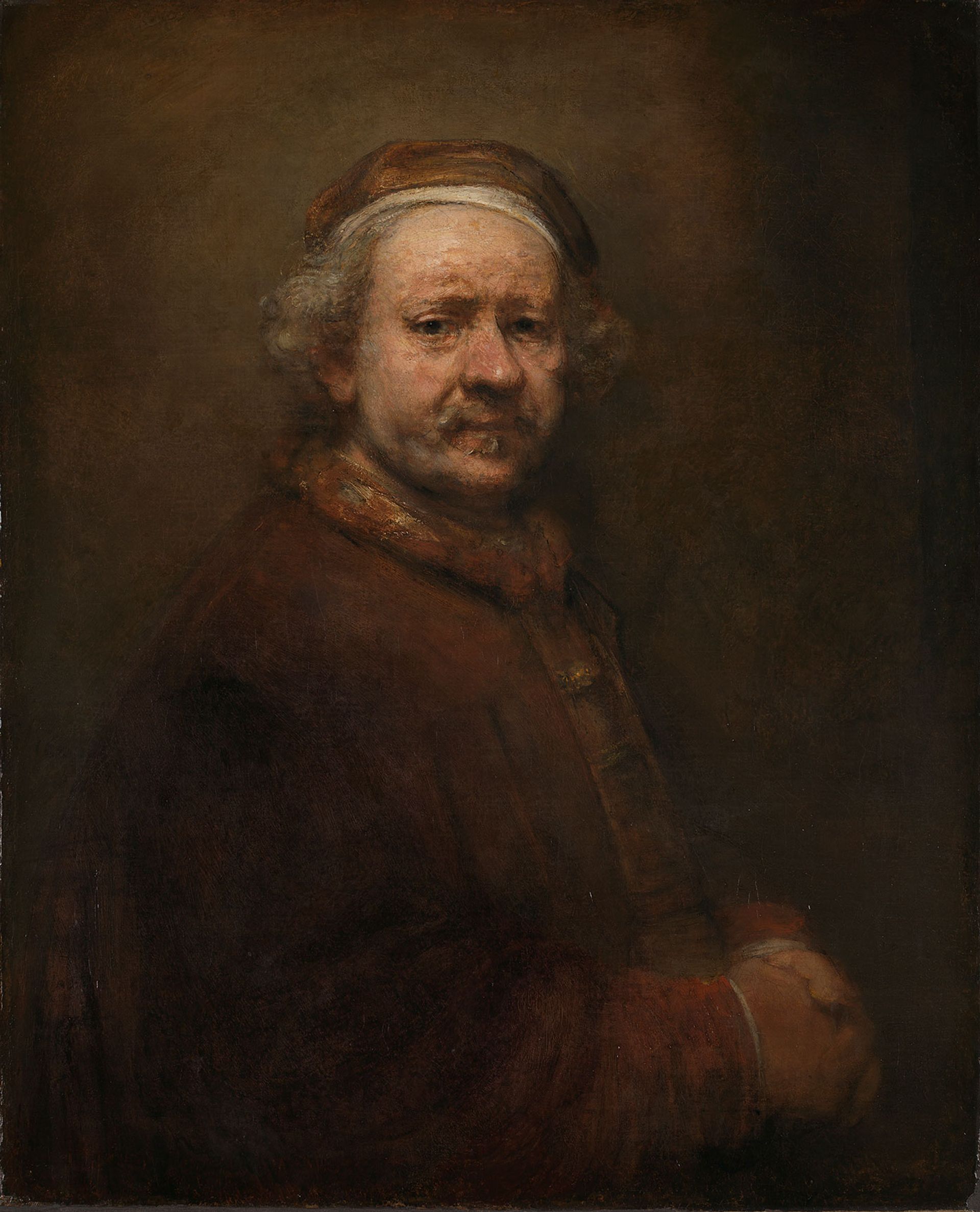
Rembrandt van Rijn, Self-Portrait at the Age of 63 (1669) Photograph: The National Gallery, London
The National Gallery is lucky to have a score of paintings by Rembrandt, the master of Dutch 17th-century painting. Self Portrait at the Age of 34 (1640) is a masterpiece: the charismatic young artist models his louche pose on paintings by Dürer, Titian and Raphael, thus apparently trying to best his heroes. However, nothing matches the self-portrait made 29 years later when the cheeks have become puffy, the hair now wisps of smoke-like grey, and the slouching red beret reveals the thinly stretched skin of an aged forehead. Made in the year of his death, in the last of his series of around 80 self-portraits, it presents an artist who knows he has few paintings left and yet, behind the sagging dotage of Rembrandt’s aspect, we still recognise the self-assurance of his youth.
Elisabeth Louise Vigée Le Brun, Self Portrait in a Straw Hat (1782)
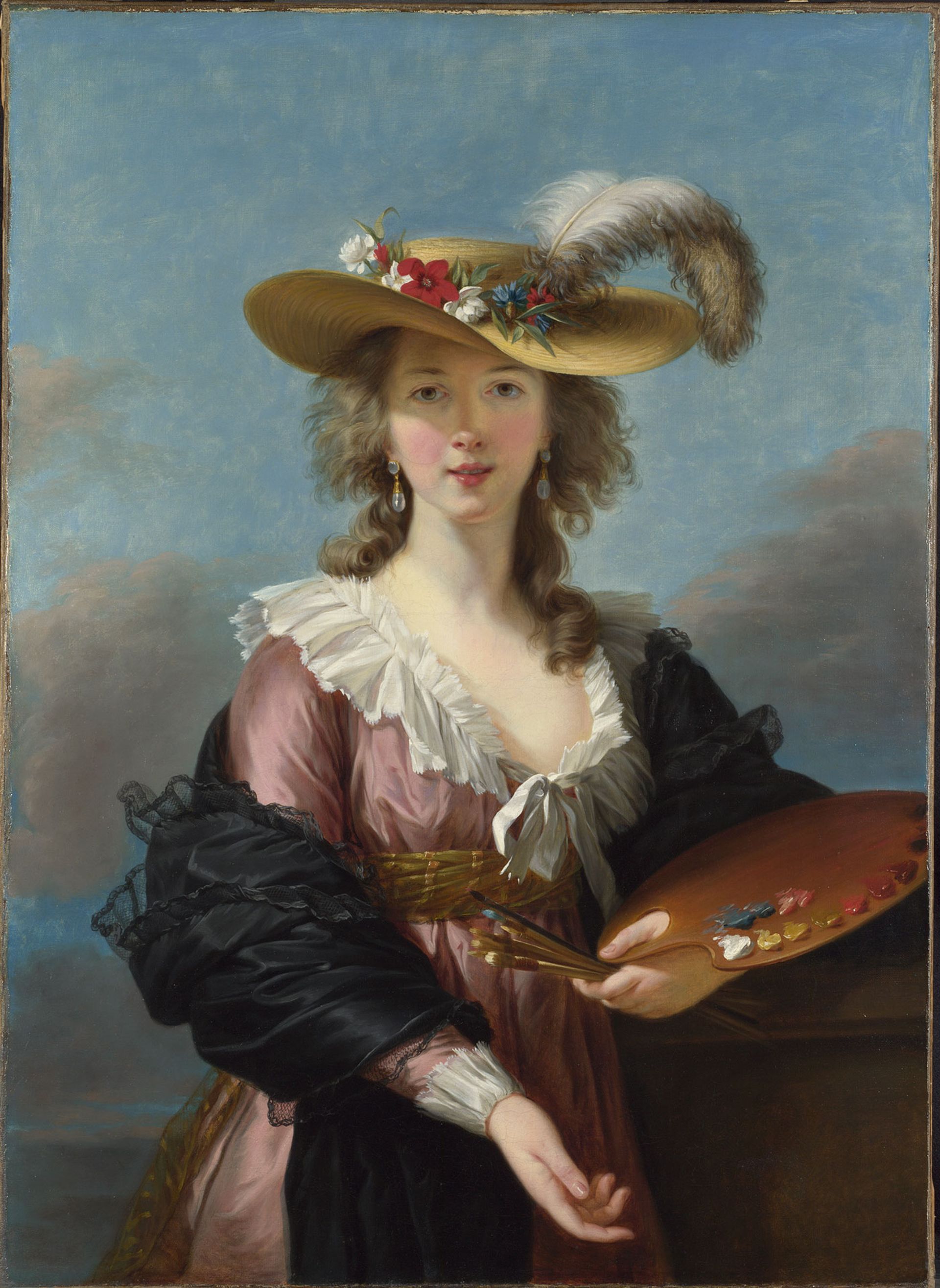
Elisabeth Louise Vigée Le Brun, Self Portrait in a Straw Hat (1782) Photograph: The National Gallery, London
Vigée Le Brun fled the French Revolution in 1789 and just about avoided the guillotine, unlike many of her aristocratic and royal patrons, the most famous of whom was Marie Antoinette. She then travelled widely and was celebrated in several European capitals and courts before returning to Paris in the Restoration of 1814. With an ostrich feather in her genuine chapeau de paille, paints ready to go on an unblemished palette, and drop pearl earrings, Vigée Le Brun depicts herself as a connoisseuse of the high tastes of her time. This painting, and especially the stance of the subject, was modelled on Rubens’s Portrait of Susanna Lunden (?) (around 1622-25), also in the National Gallery collection, with Vigée Le Brun particularly captivated by the Flemish Baroque master’s “great effect [which] resides in the two different kinds of illumination which simple daylight and the light of the sun create”.
Joseph Mallord William Turner, The Fighting Temeraire tugged to her last berth to be broken up, 1838 (1838)
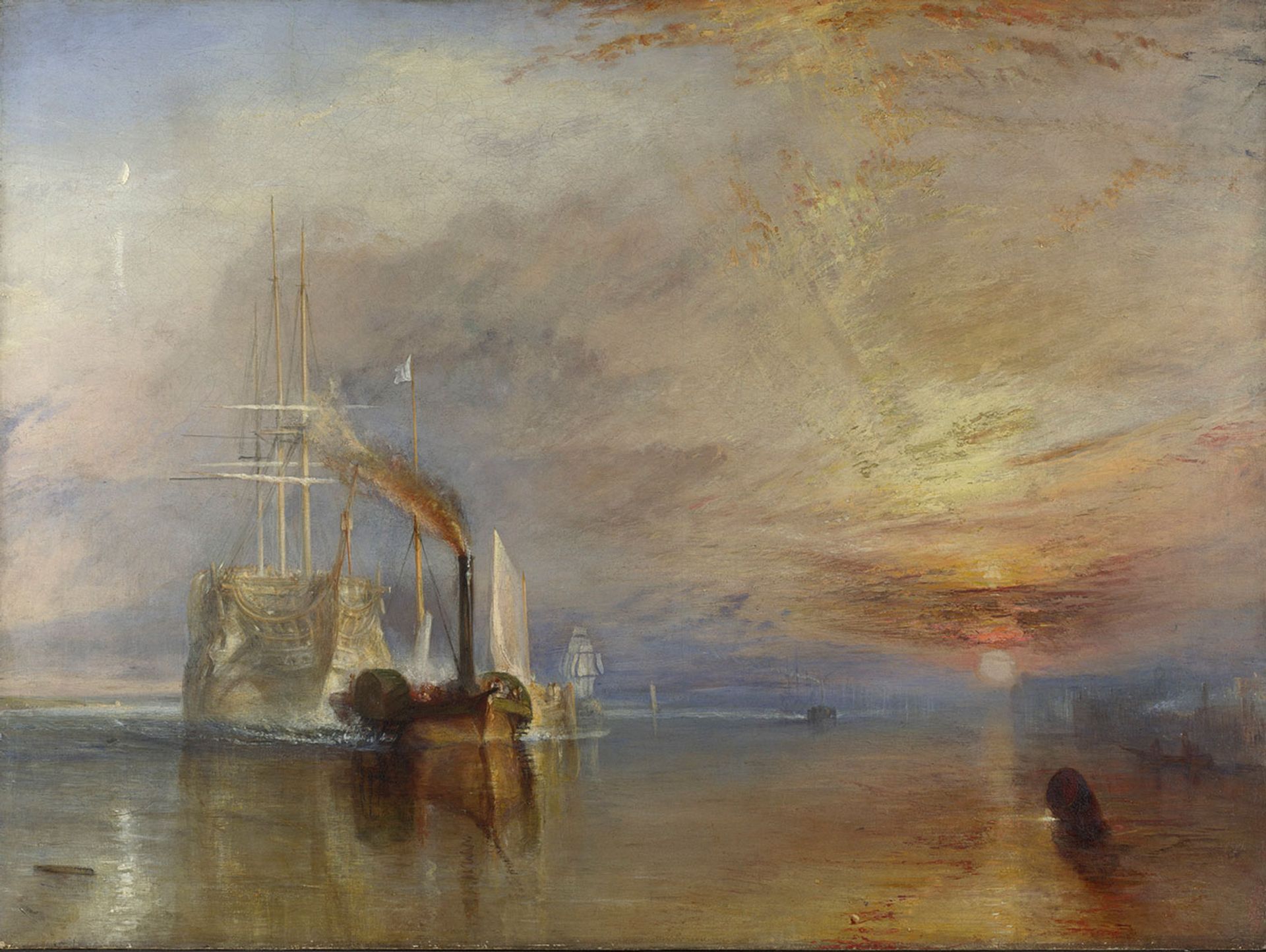
Joseph Mallord William Turner, The Fighting Temeraire tugged to her last berth to be broken up, 1838 (1838) Photograph: The National Gallery, London
The next time you buy a round of drinks with a £20 note, spend a moment taking a close look at it. Alongside insignia referencing the Turner Contemporary in Margate and the quotation “Light is therefore colour” from an 1818 lecture by the artist, you’ll see a version of his—and, it is often said, the British nation’s—most beloved picture. The HMS Temeraire was a 98-gun warship which had distinguished herself at the Battle of Trafalgar in 1805 but was now being retired and, as Turner spotted her on the Thames, on the way to be scrapped as a relic of a former age. Steamships were fronting the fleet now, and the squat black tugboat, burping flames and soot into the sublime evening sky, represents a new industrial age—less heroic, it seems, and much dirtier—as Turner seems to lament not only a former national age but the decrepitude that awaits us at the end of a long life.
Édouard Manet, The Execution of Maximilian (around 1867-68)
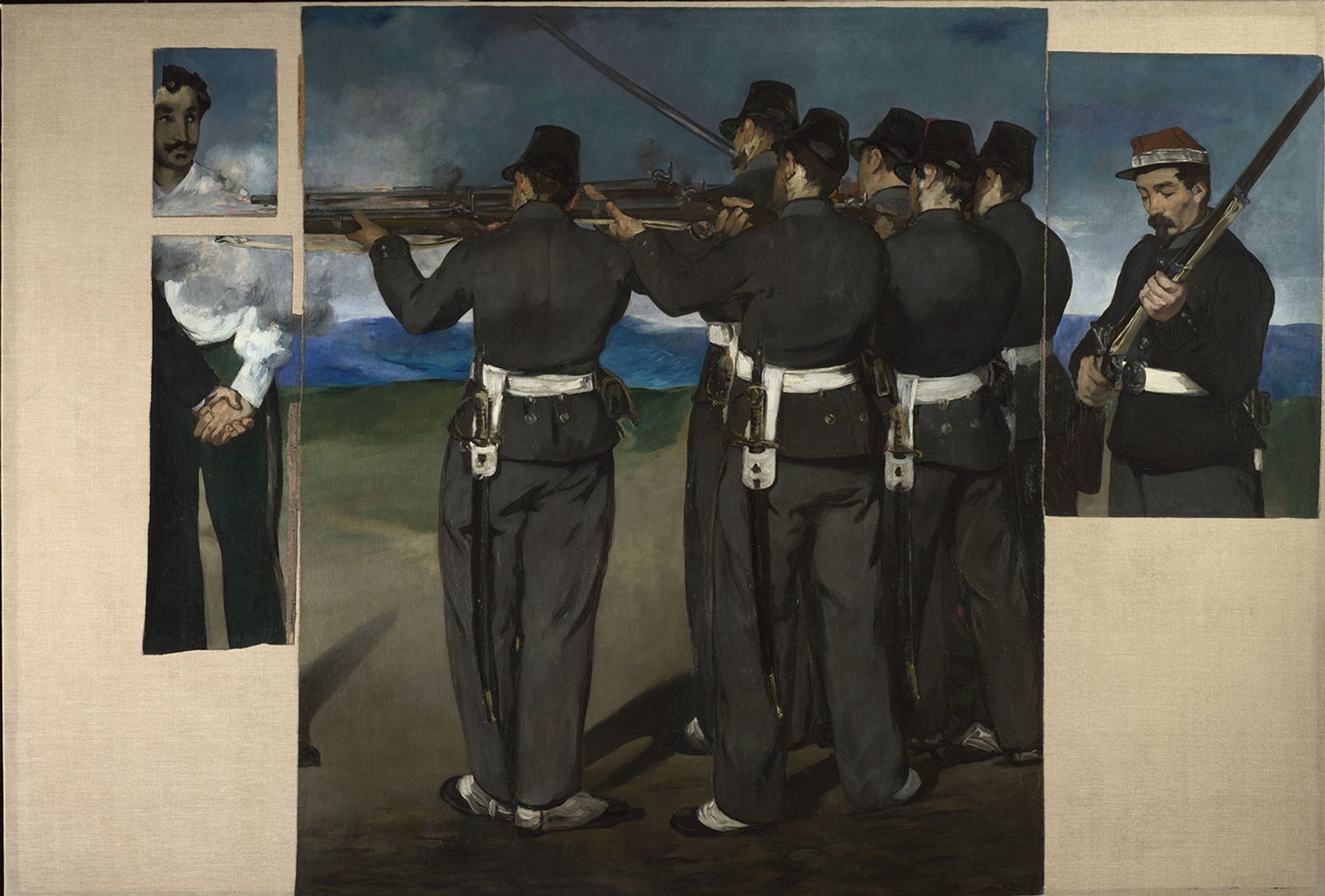
Édouard Manet, The Execution of Maximilian (around 1867-68) Photograph: The National Gallery, London
Manet made several versions of this picture—of the Mexican firing squad dispatching Maximilian I—and the National Gallery’s, the most “authentic” second rendition, was produced with the help of live models (perhaps a squad of soldiers sent to his studio by his family friend, Commandant Lejosne). The mutilated fragments of this version were ultimately retrieved and reassembled by the artist’s friend Edgar Degas. It is a masterwork of human observation. As the critic Julian Barnes memorably put it, on the stance of the soldiers and squaddie: “They are feet sinking themselves in for useful work, like a golfer’s heels shuffling for balance in a sand-trap.” If any painting wrests Manet’s reputation away from the idle and indifferent chronicler of Parisian high society, and rightly figures him as a fierce republican and a political radical, it is The Execution.
Georges Seurat, Bathers at Asnières (1884)
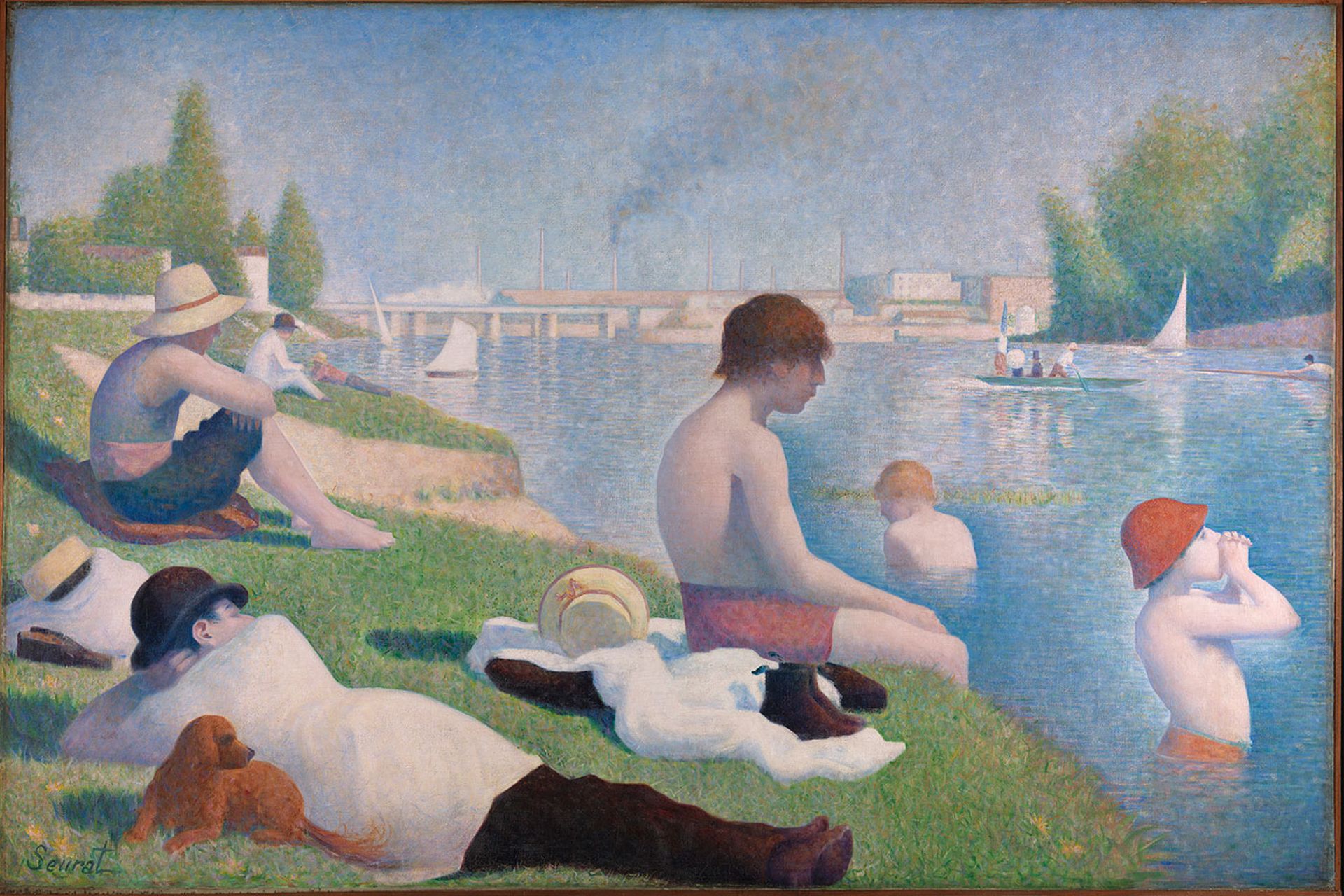
Georges Seurat, Bathers at Asnières (1884) Photograph: The National Gallery, London
For centuries, bathers beside the riverbank have featured in paintings of luxuriant leisure and spiritual ablution (see the skimpy white y-fronts behind John the Baptist in Piero della Francesca’s The Baptism of Christ, from around 1445), but here we have the spectre of how leisure really holds meaning: it is not labour. The distant factory, pumping smoke into the idyllic blue sky, is a reminder to enjoy the long weekends when they are there. Seurat’s first large-scale canvas is painted with all the people—and even the dog, boats, and shoes—depicted in profile, looking to the other side of the Seine and beyond our view. Enjoy, just do not make the mistake of calling this Pointillist (Seurat’s major stylistic contribution to Impressionism) as there are next to no points to be found here; it is all about the brushstrokes of sumptuous colour.
George Bellows, Men of the Docks (1912)
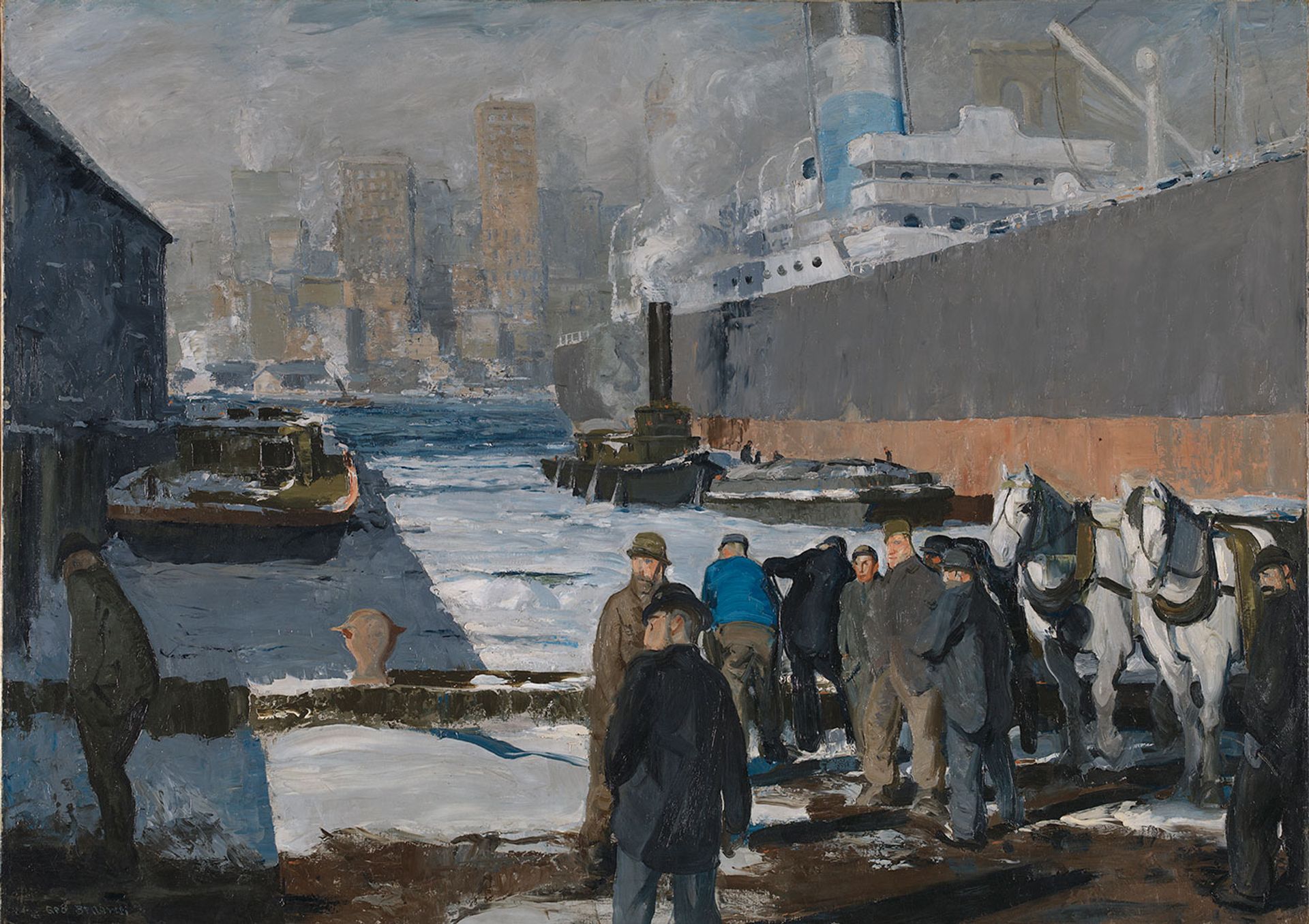
George Bellows, Men of the Docks (1912) Photograph: The National Gallery, London
A wintry picture of hard labour far from the pleasures of summertime leisure, Bellows’s depiction of dockworkers was the first important American painting to enter the National Gallery’s collection (in 2014). Bellows was a member of the Ashcan School, a group of artists who depicted the gritty and squalid "real life" of New Yorkers on the margins: prostitutes, the homeless, migrant workers. In this work, longshoremen wait on the waterfront to find out if they will have work for the day while the figure on the far left, consumed by darkness as though in a devotional painting, looks to have already missed out. The towering Manhattan skyline is clouded behind thick smoke and icy fog, and the huge steam-powered ocean-liner in the right middle ground, with presumably luxurious apartments inside (the painting was finished just weeks before the Titanic’s maiden voyage) further extenuates the plight of the poor dockworkers.


